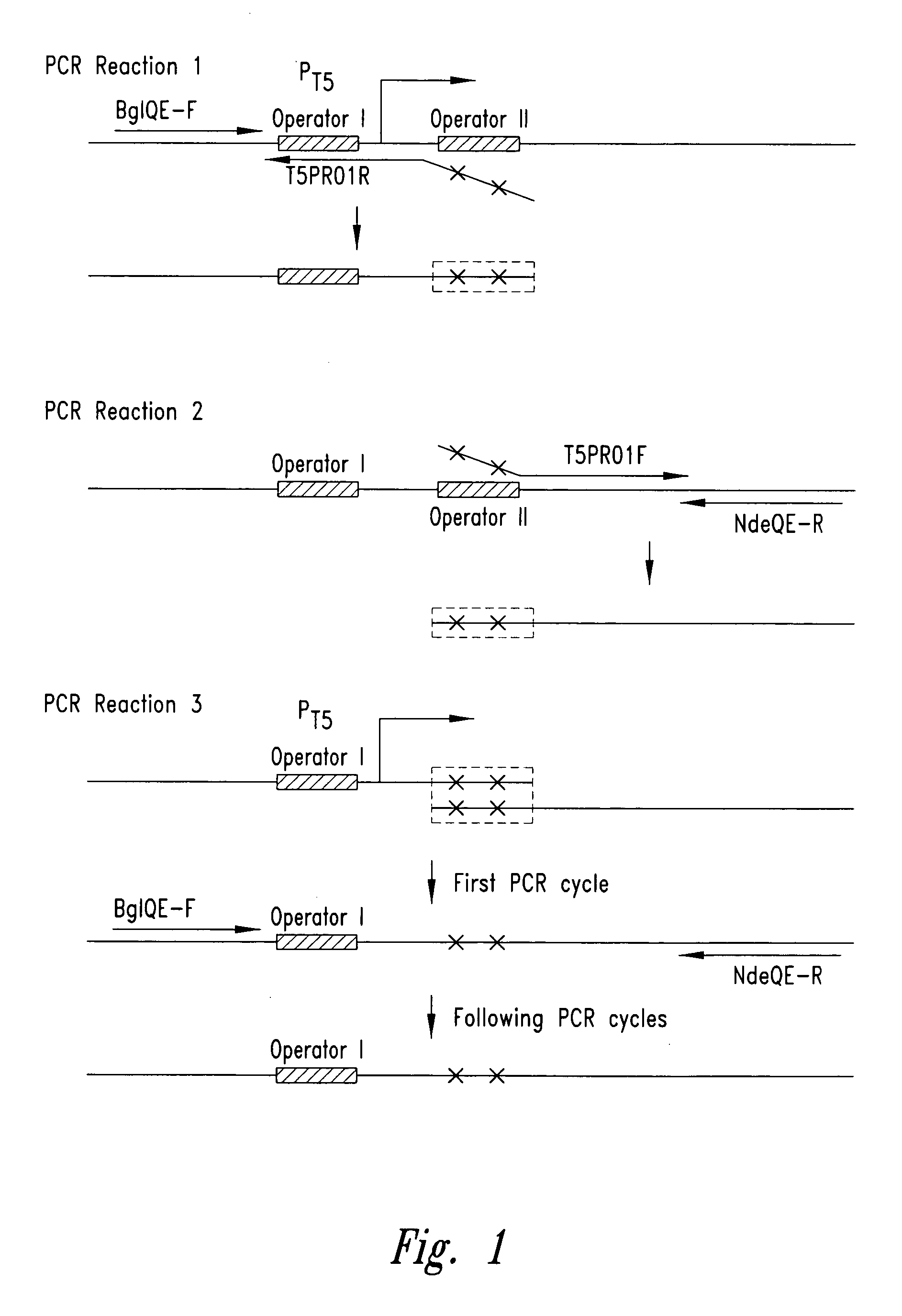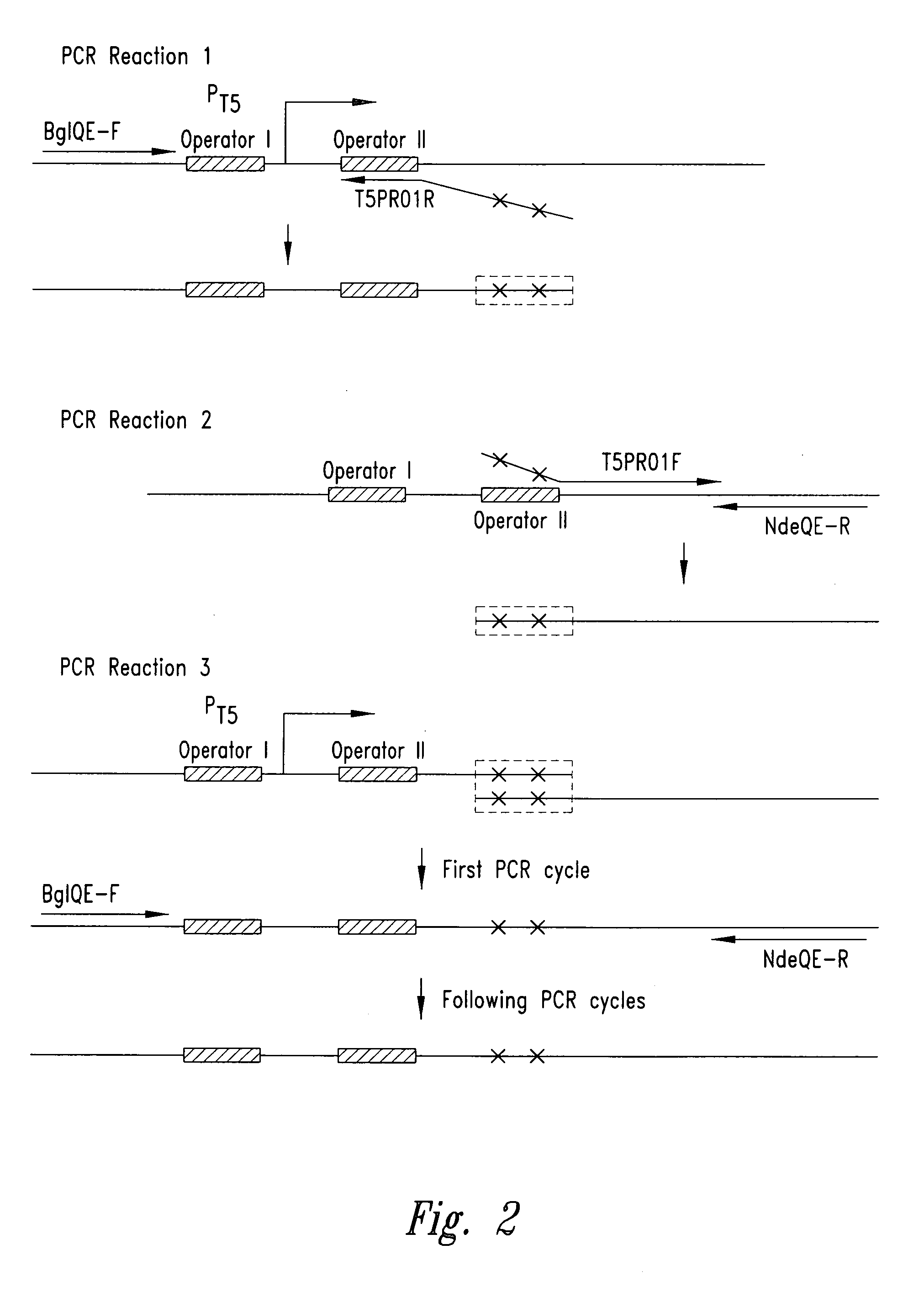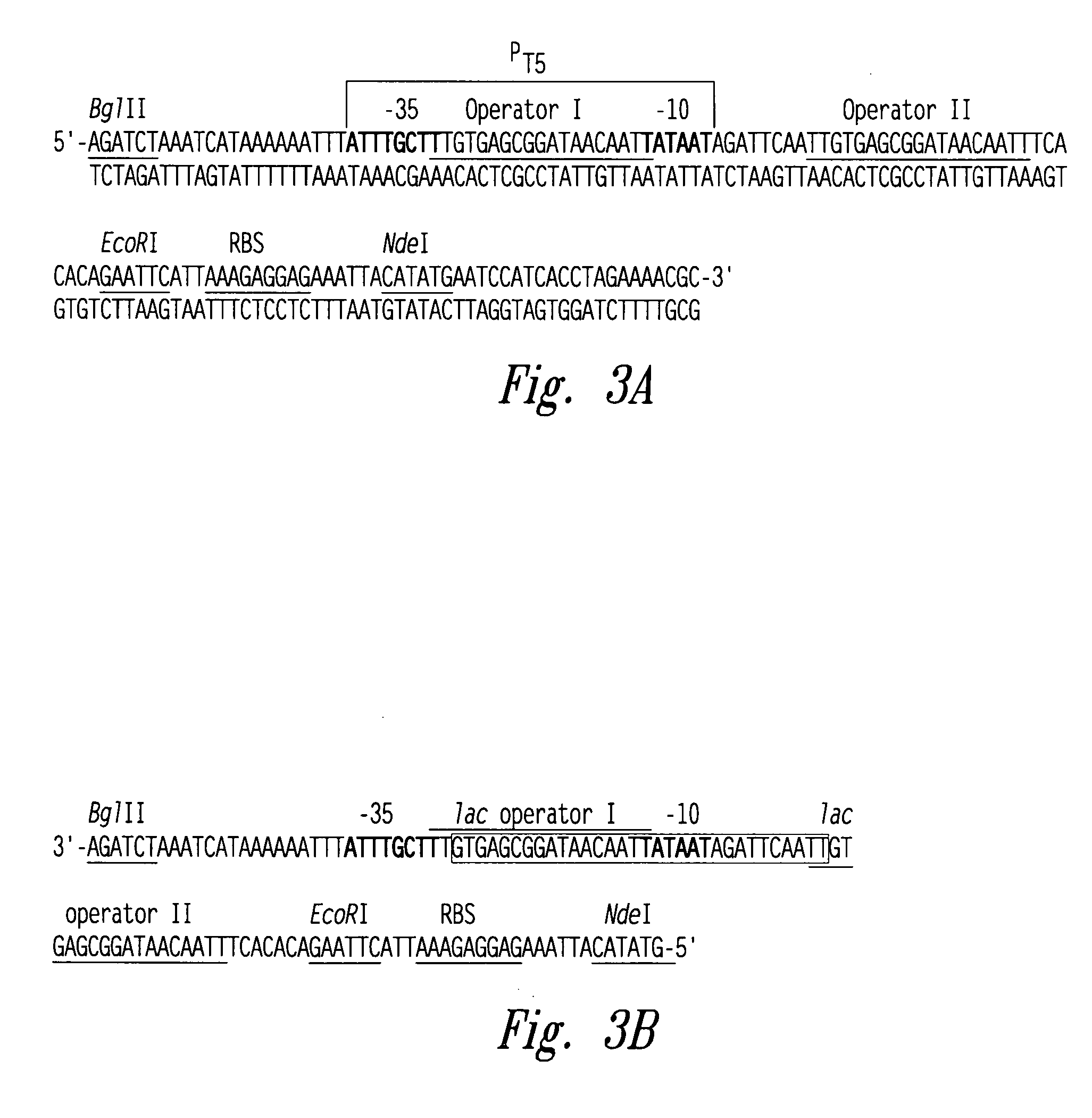Efficient protein expression system
a protein expression and efficient technology, applied in the field of nucleic acid expression control sequence cassettes, can solve problems such as affecting the efficiency of protein production, and achieve the effect of no longer altering transcriptional activity
- Summary
- Abstract
- Description
- Claims
- Application Information
AI Technical Summary
Benefits of technology
Problems solved by technology
Method used
Image
Examples
example 1
Generation of Modified T5 Promoter / Lac Operator Control Sequence
[0057] The pET-24a plasmid (Novagen, Madison, Wis.) was utilized to create the plasmid pT5. The rhnA gene was cloned into the pET-24a plasmid between the Ndel and BamHI sites to create the plasmid pET-24a-rnhA. The pET-24a plasmid (and pET-24a-rnhA plasmid) contained a T7 promoter / lac operator element downstream from a BglII restriction endonuclease recognition site and upstream from a multiple cloning site. The T7 promoter / lac operator element between the BglII and Ndel sites was then replaced with a T5 promoter / lac operator element that was generated by PCR (see FIG. 3A). The DNA fragment containing mutated bases from BglII to Ndel was generated by two rounds of PCR (see FIG. 2) and then inserted into the pET-24a-rnhA plasmid after double digestion with BglII and Ndel restriction endonucleases. The resultant pT5-rnhA plasmid was sequenced to verify replacement with the mutated fragment. A fragment of 32 base pairs co...
example 2
Cloning and Expression of Recombinant Multivalent Streptococcal Proteins
[0059] The specific 5′ sequences of each emm and spa gene were used to design hybrid nucleic acid molecules, each containing portions of 6-7 emm and / or spa gene coding sequences linked in tandem by unique restriction enzyme recognition sites. The hybrid nucleic acid molecules were constructed using PCR-generated emm or spa nucleic acid molecules that were amplified from streptococcal genomic DNA of the corresponding serotype using oligonucleotide forward and reverse primers containing restriction enzyme sites at the 5′ end. The PCR-generated fragments were purified, digested with the appropriate restriction enzymes, ligated using methods previously described (Dale et. al. J. Immunol. 151:2188, 1993: Dale, Vaccine 17:193, 1999), and then sequentially cloned into the expression vector pT5. The expression plasmids pT5-Hexavalent A.3 and pT5-Septavalent B.3a were derived from pT5-Hexavalent A.1 (FIG. 4) and pT5-Sep...
example 3
Cloning and Expression of Recombinant Dimeric M18 Streptococcal Proteins
[0061] The emm18 gene fragment coding for the first 50 amino acid residues was amplified by PCR, purified, and cloned sequentially into the expression vector pT5 as an in-frame dimer with a restriction enzyme site (EcoRI) between each coding sequence. The PCR-generated sequence was verified by sequencing both strands of the dimer-encoding nucleic acid molecule. High-level expression of the M18 dimeric peptide in transformed JM105 E. coli was detected by SDS-PAGE analysis using whole cell lysates before and after 1 mM isopropyl-beta-D-thiogalactopyranoside (IPTG) induction (FIG. 7). These results show that small polypeptides may be used with the nucleic acid expression control sequence of the present invention.
PUM
| Property | Measurement | Unit |
|---|---|---|
| dissociation constants | aaaaa | aaaaa |
| dissociation constants | aaaaa | aaaaa |
| dissociation constants | aaaaa | aaaaa |
Abstract
Description
Claims
Application Information
 Login to View More
Login to View More - R&D
- Intellectual Property
- Life Sciences
- Materials
- Tech Scout
- Unparalleled Data Quality
- Higher Quality Content
- 60% Fewer Hallucinations
Browse by: Latest US Patents, China's latest patents, Technical Efficacy Thesaurus, Application Domain, Technology Topic, Popular Technical Reports.
© 2025 PatSnap. All rights reserved.Legal|Privacy policy|Modern Slavery Act Transparency Statement|Sitemap|About US| Contact US: help@patsnap.com



